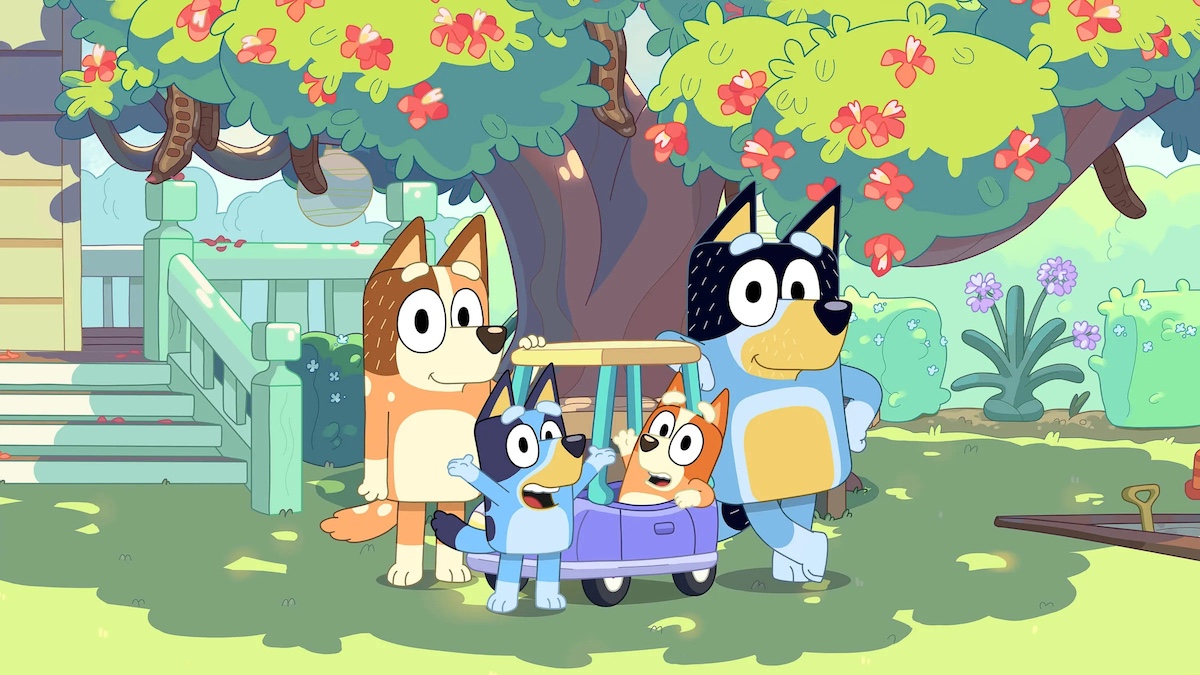Thank Goodness the ‘Bluey’ Special Ended the Way It Did
5/5 For Sale signs

The 28 minute Bluey special, “The Sign,” finally came out last weekend, and I know I wasn’t the only parent walking around in a state of quiet anxiety before it was released. Were the Heelers going to move? Was this special the series finale? There were so many questions!
Warning: this post contains massive spoilers for the Bluey special “The Sign!”
When “The Sign” finally came out (I had to spend the day off the internet to avoid spoilers, since my family had errands to run before we all watched it over dinner), it really seemed like the show was going for the horrifically sad ending we all feared. The Heelers’ house was up for sale, and it found a buyer! The realtor, Bucky Dunston, put a “sold” sticker over the sign in their yard! We all watched, aghast, as a group of movers cleared out all the Heelers’ furniture and the family got in the car to leave. One of my kids started sobbing when Bingo finally figured out what was going on and tried to uproot the sign herself.
The show does a fun thing with that sign, by the way. At first, the kids attach a funny correlation fallacy to it: they believe that if they pull the sign out of the ground, then the house won’t be for sale anymore. Chilli has to explain that that’s not how real estate transactions work.
But then, at the end, a miracle occurs. When Bandit finds out that the buyers have backed out of the sale, he really does pull out the sign. Suddenly, uprooting it means exactly what the kids thought it meant! The grownups have come to their senses and decided not to move after all! It’s an interesting way of playing with expectations, since the almost supernatural meaning the kids ascribe to the sign turns out to be correct.
After the episode, my husband and I wondered if the ending was a copout or not. Wouldn’t it have been a meatier and more ambitious story to have the Heelers actually move? As Calypso says in the beginning, life gives us sad endings, and Bluey has never shied away from tough topics before.
But there are a couple of interesting things going on in this episode. First off, the whole episode is based on an ancient parable about not growing attached to outcomes, and letting things play out as they’re meant to. Is this a happy ending to this particular chapter of the Heelers’ lives? We’ll see. The whole point is that calling something a “happy ending” is always going to be premature. In real life, at least.
Secondly, there’s a meta-narrative in this episode. If you look closely, you can see the show subtly commenting on the fact that it’s a show. As Calypso explains to Bluey in the beginning, fiction has happy endings because life gives us sad endings. Bluey is fiction, and one of the joys of the show is its wish fulfillment. In Bluey, fights are always short-lived, school is a warm and nurturing place, and parents always have time to play with their kids. Given that premise, why wouldn’t “The Sign” have a happy ending? Frisky and Rad’s relationship works out, Brandy finally gets pregnant, and Bluey gets to stay in her house. Why not let kids—and parents—have a little joy in a world that feels increasingly bleak?
I’m so relieved that Bluey and her family are staying in that gorgeous house with their whimsical friends and neighbors. Bluey is a little ray of sunshine for kids and their grownups, and I can’t wait to see what happens next.
(featured image: Disney+)
Have a tip we should know? [email protected]
